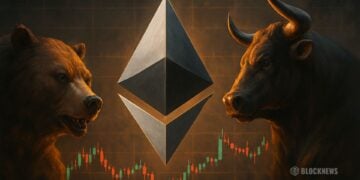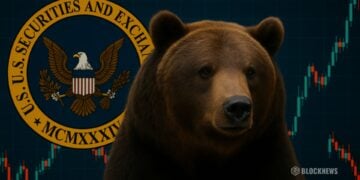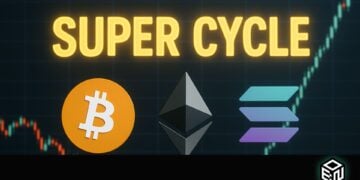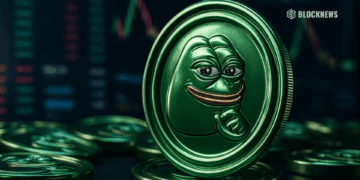- Bitcoin NFT sales surged by 80% to $168.5 million, surpassing Ethereum’s $162 million.
- The spike was led by Ordinals-based collections, notably NodeMonkes and Natcats.
- NodeMonkes, a key collection, saw a nearly 170% increase in sales, reaching over $41 million.
Bitcoin has recently edged out Ethereum in NFT sales, thanks to a burgeoning interest in Ordinals-based collections, according to CryptoSlam. This shift, largely driven by the NodeMonkes collection, has seen Bitcoin NFT transactions soar to $168.5 million over the past week, an 80% increase from the previous period. Ethereum, long considered the mainstay of NFT sales, trailed slightly with $162 million in sales.
A New Frontier for NFTs
The introduction of Ordinals in January 2023 revolutionized the Bitcoin ecosystem by enabling the embedding of digital assets, akin to NFTs, directly onto Bitcoin’s smallest units, satoshis. This innovation has not only broadened the scope of Bitcoin’s utility but also injected fresh vitality into its market.
NodeMonkes, with its 10,000 unique, pixelated avatars, has become a standout in this new landscape, with sales surpassing $41 million, marking a significant uptick from the week before. Its status as one of the first large-scale collections on Bitcoin has attracted considerable attention and investment, distinguishing it from earlier collections by its timing and execution.
Market Dynamics and Cultural Significance
The popularity of these collections, particularly NodeMonkes, underscores a growing appreciation for digital provenance and narrative in the NFT space. As collectors and investors gravitate towards assets with unique stories and historical significance, collections like NodeMonkes gain value not just from their artistic merit but from their place in the broader narrative of blockchain and digital art.
This shift towards Bitcoin-based NFTs signals a potential expansion of the digital collectibles market, challenging Ethereum’s long-standing dominance. As the landscape continues to evolve, the interplay between technological innovation, market dynamics, and cultural significance will undoubtedly shape the future of NFTs and digital art.














